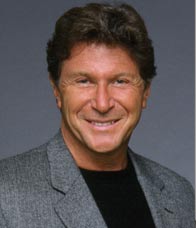|
Interview with Ken Dychtwald on Midlife Crisis
February 2009 - By Dr. Nagendra V Chowdary
 Ken Dychtwald
Ken DychtwaldKen Dychtwald, founding president and CEO of Age Wave 
Longer term, your company will need
these workers – and may want some
to work past retirement age. Alleviating
shortages and preventing a brain
drain are not a matter of enticing just
one generation of older workers to
continue contributing; rather, working
(at least part-time) past retirement
age will most likely soon become the
norm.
Therefore, rekindling the careers of
midcareer workers is simultaneously
a short-term and a long-term play.
The same career changes andmanagement
actions to reenergize employees
today also increase their effectiveness,
commitment, and loyalty down the road. It’s a win-win arrangement: win
now with greater productivity and
innovation; win later with better retention
of employees with
|
|
important
skill and experience. Or a lose-lose, if
too many employees remain frustrated
in their careers, gradually disengage,
and merely count the days
until retirement. Who are the disaffected people
who stay back and why is it that they
are bad for business?
As discussed above, loss of productivity
among burned-out, disaffected
midcareer workers can be an even
greater problem than turnover. Companies
which do not appropriately
motivate and meet the needs of
midcareer workers will often pay the
price with reduced energy, enthusiasm,
innovation, and focus. Moreover,
though turnover and retention
problems are relatively easy to measure,
declining productivity and innovation
can be harder to identify but
lead to long-term severe problems –
particularly since many midcareer
workers are in positions of significant
responsibility and leadership. What proactive steps do you suggest
for the companies to address the
imminent middlescents? Are there
any best practices/ best companies in
this regard?
I recommend three tactics for organizations
to help refresh, reengage and
unlock more of the potential of
midcareer workers:
Rekindle careers.
There are a variety of ways to rejuvenate
people and their careers, engendering
a fresh sense of accomplishment
and renewed loyalty and commitment
to the organization. These
include fresh assignments or career
switches, mentoring or knowledgesharing
roles, additional training and
development, and sabbaticals.
Change of pace, the opportunity to
learn, and the opportunity to apply
what’s already known in new ways
can all reengagemidcareer employees,
rekindle their ambition, and rejuvenate
their careers. Part of this initiative
involves the creation of a culture of
continued learning. Dow Chemical,
for example, has developed an explicit
companywide expectation that
employees at all levels will continue
to learn and grow, seek out new roles
and development opportunities, and
ready themselves for their “next career”
moves. Companies can also create
processes that empower
midcareer workers to explore engaging
new opportunities. At Duke
Power, employees can post their jobs
in search of swaps with others of
equal grade level. At Lands’End, employees
can request two week trial
transfers to other departments and
then finalize to switch if all goes well. Recruit reentrants.
Organizations can capitalize on the
opportunity to recruit skilled and experienced
midcareer employees, including
people returning to the
workforce (for example, women returning
after raising families), people
changing careers, and people displaced
by other organizations’
restructurings. These people are often
highly capable and eager, but they
may not have the recent relevant track
record that dominates most hiring decisions.
Organizations hire young
workers primarily on the basis of capability
and potential more than immediate
experience. They should be
open to hiring people of all ages on
that basis. Many organizations may
find a substantial untapped
workforce pool by targetingmidcareer
workers. For example, ARO, Inc., a
business process outsourcer based in
Kansas City, Missouri, struggled to recruiting
talented staff for its calling
centers. Consequently, ARO upgraded
the technology needed to accommodate virtual workers, then set
about recruiting. The target: baby
boomers, who represent a large potential
pool of workers and bring desired
characteristics. “Boomers are
mature, experienced, and comfortable
making decisions on the phone,”
says Amigoni. “ARO has clients in
the insurance, financial services, and
medical sectors, and a lot of the
people we talk to are older. It helps
that the people making the calls on financial
services products are older,
because they are in similar circumstances
to the customers.” Expand leadership development.
Despite the size of the boomer cohort
and the number ofmidcareer employees
eager to fill the relatively scarce
promotion slots available, many large
organizations find their leadership
‘bench strength’ surprisingly thin because
their leadership development
pipelines have gotten leaky. Companies
can take the opportunity to refill
the pipeline withmidcareer aswell as
young high potentials, and to recognize
late-bloomer candidates for leadership.
They can also extend leadership
development experiences to
people who will be leaders within
their organizations or functions, but
are not necessarily on a path to the
executive suite. For example, RBC
Financial Group felt it needed to develop
the next group of leaders to run
the fast-growing group of banks and
financial services companies. They
recognized a capability gap between
the current executive team and the
leaders to follow. So they created
teams of current leaders and “nextgeneration
leaders.” Through direct
experience sharing and involvement
in decision making, the next-generation
leaders learned both specific
techniques and the core leadership
values of RBC while simultaneously
participating in the development of
new strategy. Highly respected current
leaders communicated these
leadership values by telling real RBC
‘stories’ that describe chaotic business situations, decision making, uncertainty,
social interaction, and the like.
The future leaders learned to implement
strategy by sharing experience
of real struggles of making decisions
while maintaining values, trust, and
fairness. Future leaders created development
action plans and are
mentored by their current-leader
coaches.
1.
Coca-Cola's Belgian Crisis Case Study
2. ICMR
Case Collection
3.
Case Study Volumes
|
